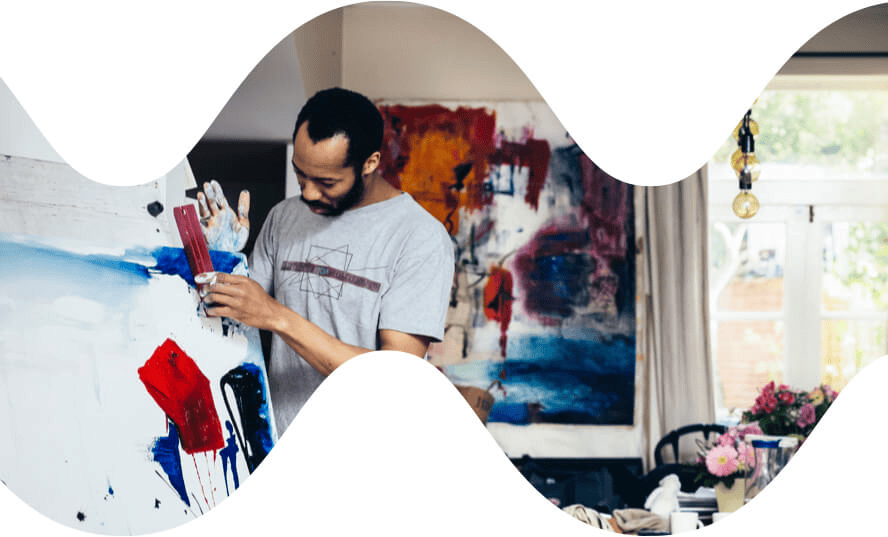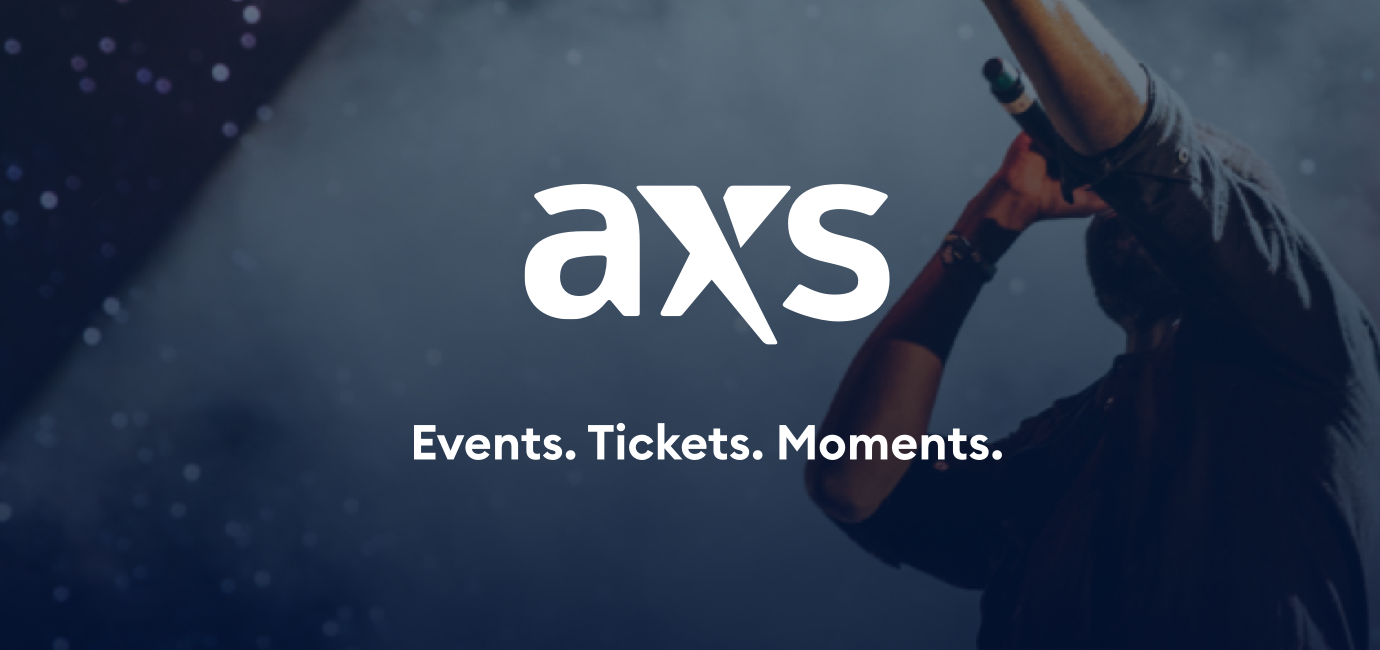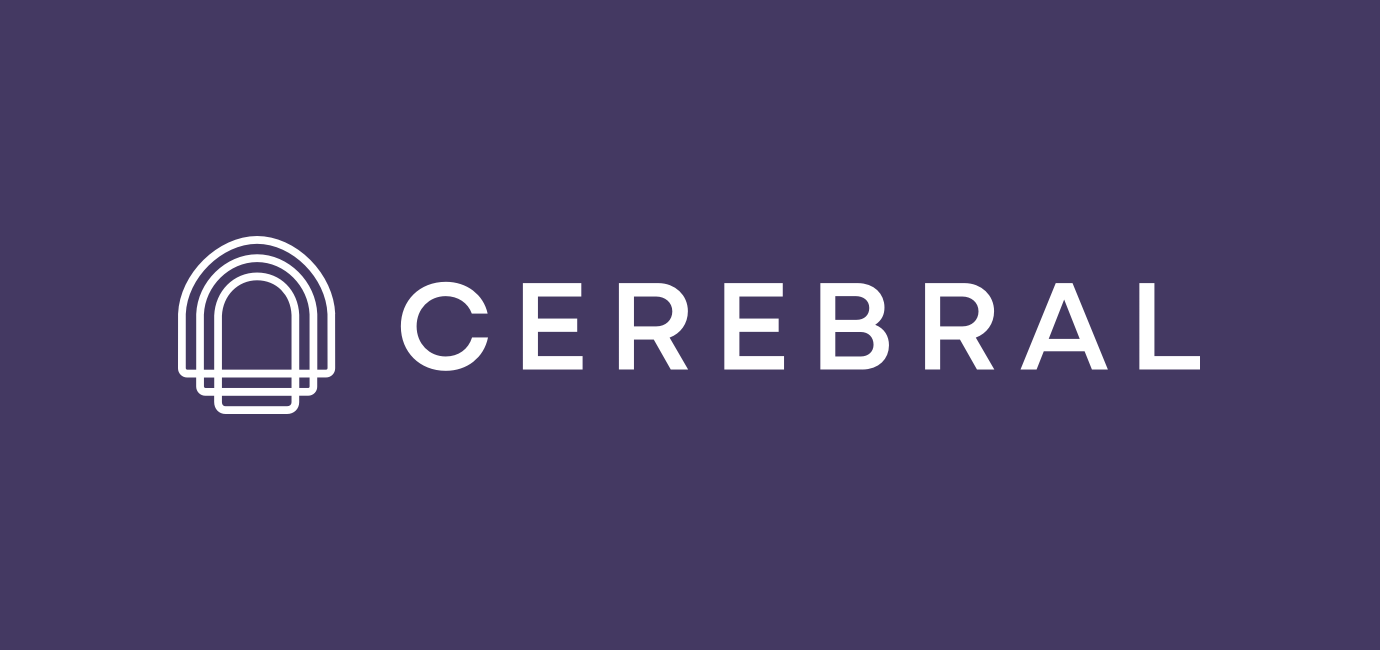Summary
LegalZoom is a $5B legal technology leader that has formed over 3.7M businesses since launch. With nearly half its revenue coming from business formation, leadership was understandably cautious about experimenting with the core product.
I led UX for Ribbon, a cross-functional innovation team created to explore new approaches outside the constraints of legacy systems. We had complete freedom to reimagine pricing, visual design, funnel structure, and product offerings. We were essentially building a competitor to our own product to uncover insights.
Through rapid experimentation and user research, we validated key hypotheses about progressive disclosure, trust-building, and conversion optimization that influenced product thinking across the organization.
Josh wears many hats -- experience design, product ideation, software expert, UI designer, and even developer -- and is able to communicate and execute complex ideas clearly and consistently.
Background
The challenge
LegalZoom’s business formation product generates almost half the company’s revenue, but the existing experience required users to answer 23 pages of detailed questions before purchase. This created significant drop-off and user frustration.
Leadership was hesitant to take risks with such a critical product. They needed a way to test new ideas without disrupting the core business.
The opportunity
Enter Ribbon: an internal startup with autonomy to experiment with price points, visual design, funnel structure, and product offerings independently of legacy systems. Our mission was to discover what might work better, then bring those insights back to the main product.
My role
As Principal Designer, I partnered closely with the VPs of Marketing, Creative, and UX to determine product strategy. Working alongside another Product Designer, we pair-designed the entire experience from top to bottom, developing both a design system and visual language. I also worked closely with engineering to ensure velocity and 1:1 parity with shipped designs.
Discovery & strategy
Understanding the market landscape
Our competitive analysis revealed where LegalZoom sat in the market. We positioned Ribbon to explore the “high value, low cost” quadrant to offer a premium experience at accessible prices.
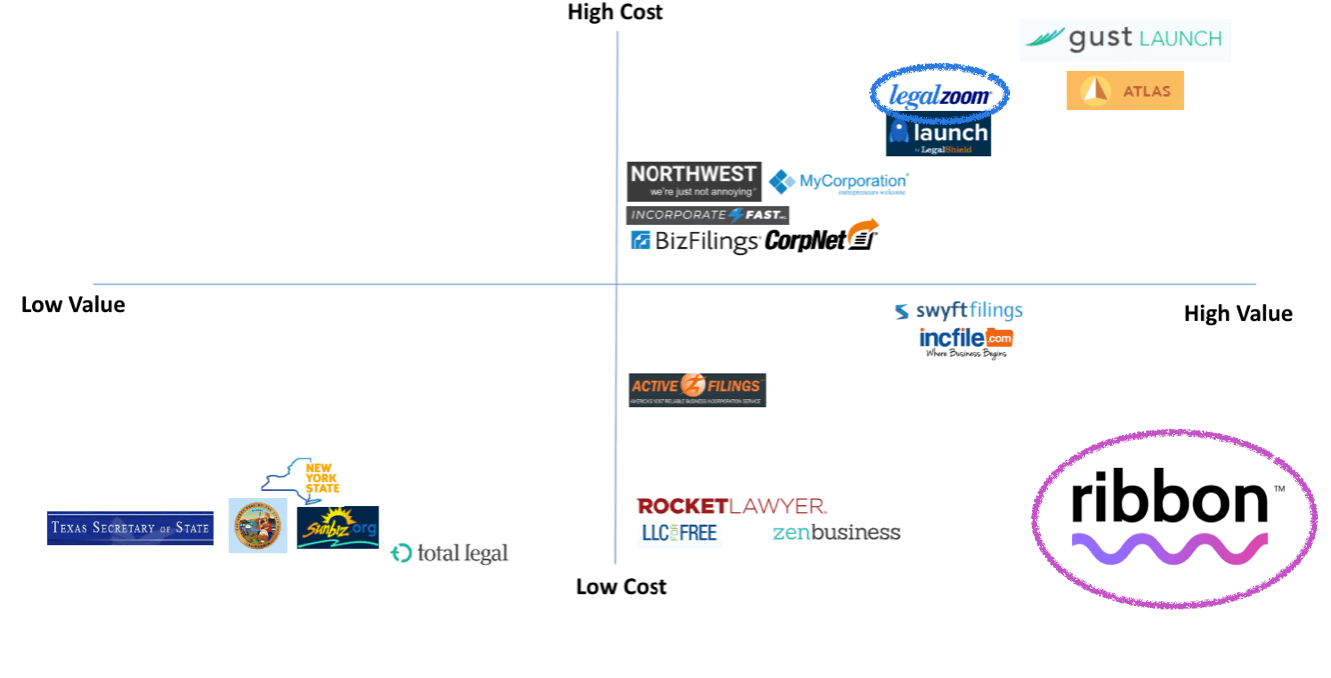
Research constraints and approach
With only four weeks to deliver, we had to make informed assumptions based on existing research. This included competitive analyses of 13+ competitors, proto-personas based on customer data, customer journey maps from previous studies, and mothballed designs that had been previously tested.
The hypothesis: Progressive disclosure
Based on our research synthesis, I proposed a fundamental shift in approach. Instead of requiring all information upfront, we would ask easy questions first, building trust progressively through the experience.
Existing LegalZoom purchase funnel
Click CTA to start purchase funnel
Answer 23 pages of detailed questions
Checkout and purchase
Answer even more questions
| Traditional Approach | Our Hypothesis | Expected Benefit |
|---|---|---|
| 23 pages of questions up front | Easy questions first | Reduced cognitive load |
| All info before pricing | Show value progressively | Increased trust |
| Complex legal language | Simplified, friendly copy | Better comprehension |
Our hypothesis: ask the easy questions first
Click CTA to start purchase funnel
Answer a short set of easy questions
Checkout and purchase
Design process
Information architecture
I started by mapping out the existing flow and identifying opportunities for improvement. The key insight: we could move complex questions to after purchase, when users were already committed.
Rapid prototyping
Working in tandem with my design partner, we moved from sketches to high-fidelity designs in days. Every design decision was annotated for engineering clarity.
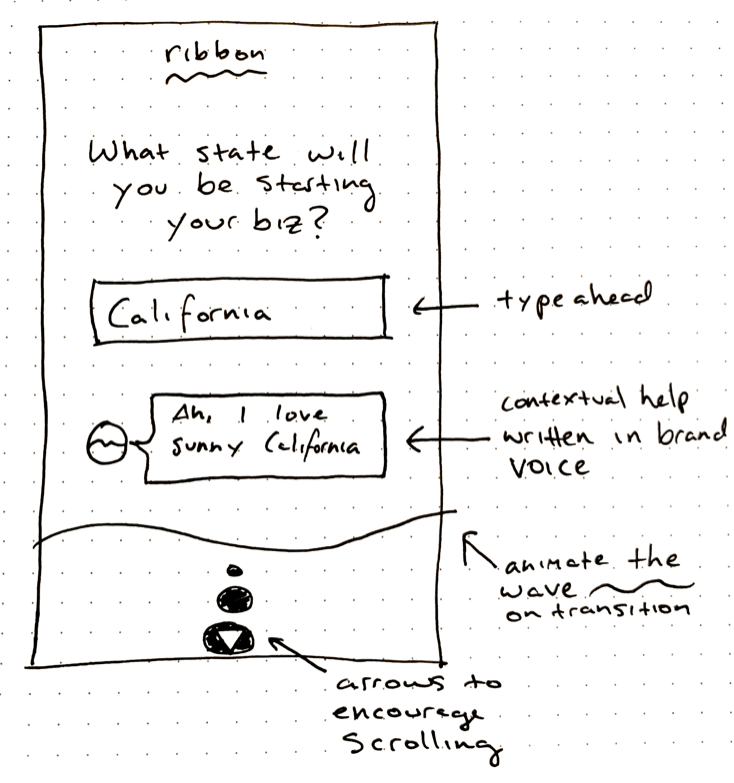
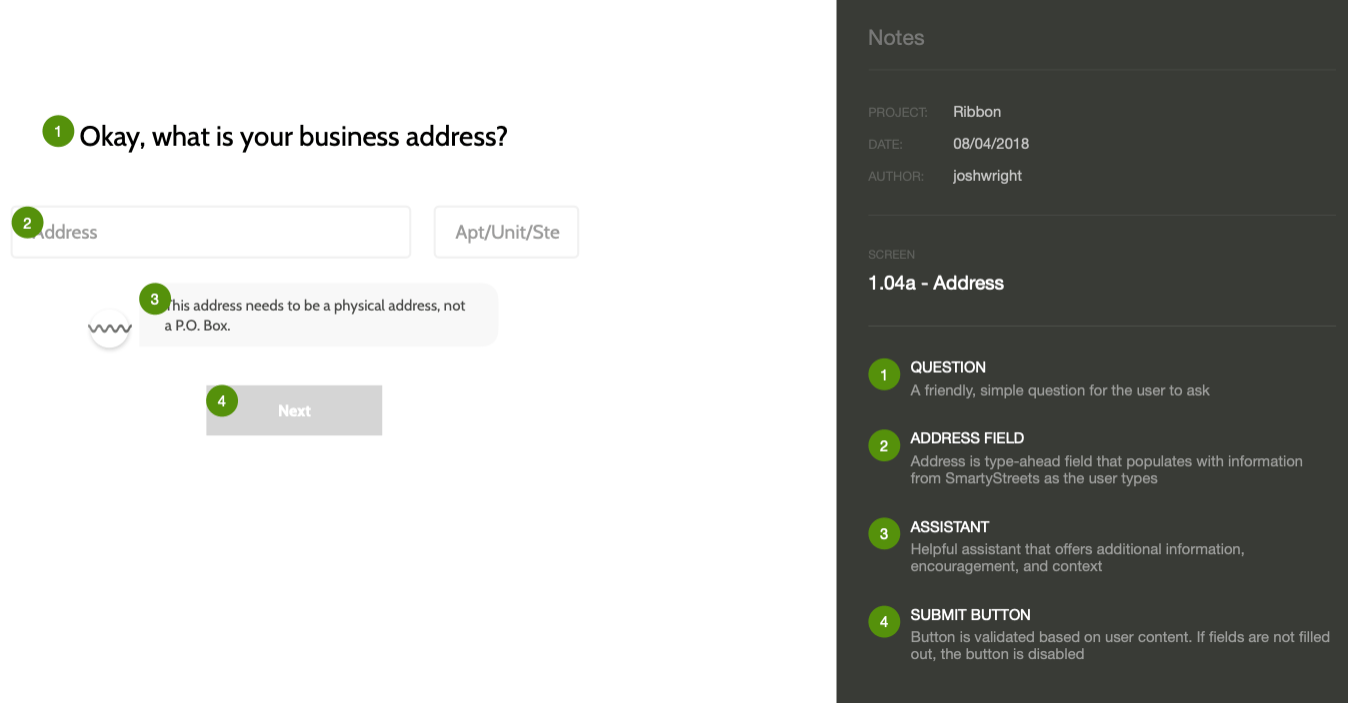
Creating Thread: Our design system
We developed a comprehensive design system called Thread, enabling rapid iteration while maintaining consistency. This became the foundation for all Ribbon designs and allowed us to move quickly without sacrificing quality.
Brand identity emerges
The visual design balanced playfulness with professionalism, using illustrations and animations to reduce anxiety around legal processes. We wanted to make business formation feel accessible, not intimidating.

Key design decisions
Simplified entry experience
Instead of overwhelming users with forms, we started with a single, friendly question: “Where do you want to form your business?” This immediately reduced bounce rates and set a conversational tone.
Building trust through transparency
We designed each step to clearly communicate value. Users understood exactly what they were getting and why each piece of information was needed. No hidden fees, no surprises.

Testing and iteration
Week 1 results
We launched with limited AdWords traffic, capping orders at 40 to avoid overwhelming our third-party vendor. Despite low expectations for an unknown brand, our initial results were promising:
Rapid iteration based on data
Between weeks, we analyzed drop-off points and optimized the flow. Using post-it notes, bounce rate and interaction data, and rapid prototyping, we identified friction points and tested solutions. The entire team collaborated in real-time to implement improvements.
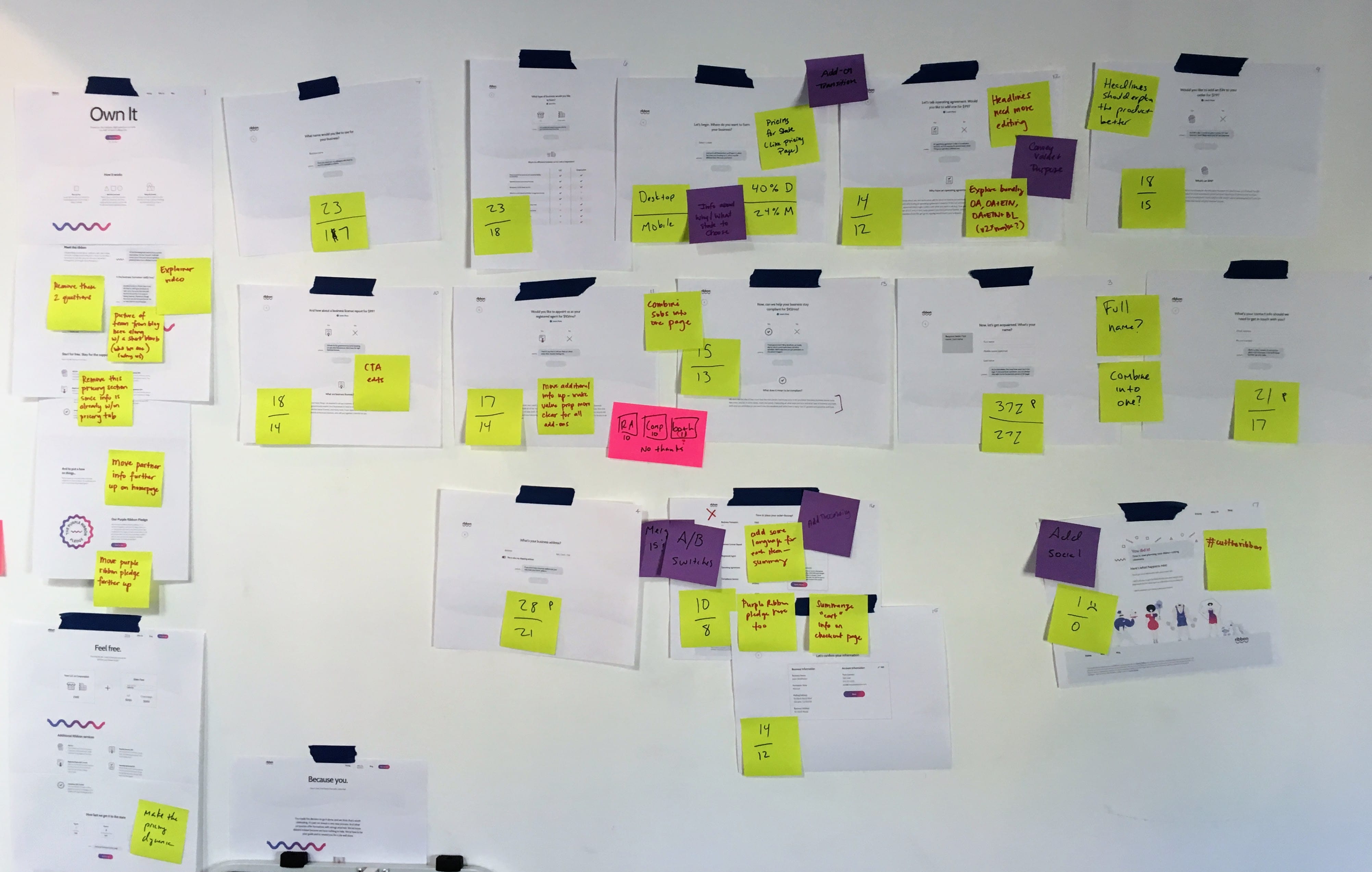
Week 2 improvements
Our iterations paid off. After optimizing the question flow and clarifying value propositions, we saw significant improvement:
This gave us enough data to present to leadership and created a recruiting pool for ongoing research.
Implementation and engineering collaboration
Maintaining velocity through partnership
Working in one-week sprints required exceptional collaboration between design and engineering. We held daily standups, shared prototypes in real-time, and made decisions quickly. When implementation questions arose, we resolved them immediately rather than waiting for formal reviews.
Shipping with precision
Despite the aggressive timeline, we maintained high standards for implementation quality. The final product matched our designs pixel-for-pixel, including animations and micro-interactions that were crucial to the experience.
Results and organizational impact
Influencing the broader organization
While Ribbon operated independently, our findings influenced thinking across LegalZoom. The success of progressive disclosure led to discussions about simplifying the main product experience. Our approach to trust-building through transparency became a reference point for other teams.
| Validated Principle | How It Influenced LegalZoom |
|---|---|
| Progressive disclosure reduces drop-off | Initiated projects to simplify main funnel |
| Friendly language improves trust | Content strategy shifts across products |
| Visual delight reduces anxiety | Animation guidelines added to design system |
Demonstrating the value of experimentation
The project proved that protected innovation spaces could generate valuable insights without risking core business metrics. By creating a separate brand and testing ground, we could validate hypotheses that would have been too risky to test on the main product.
Reflection
This project reinforced several important principles about innovation and design. Speed doesn’t mean sacrificing quality. By having clear principles and close collaboration, we delivered a polished product in just four weeks. The tight timeline forced us to focus on what truly mattered: reducing friction and building trust.
Ribbon proved that even established products with millions of users can benefit from fundamental rethinking. Sometimes the best way to improve a product is to pretend you’re competing with it. That outside perspective, combined with inside knowledge, creates the conditions for breakthrough insights.
Most importantly, it demonstrated that innovation doesn’t always require massive resources. Just the freedom to experiment and learn quickly.
